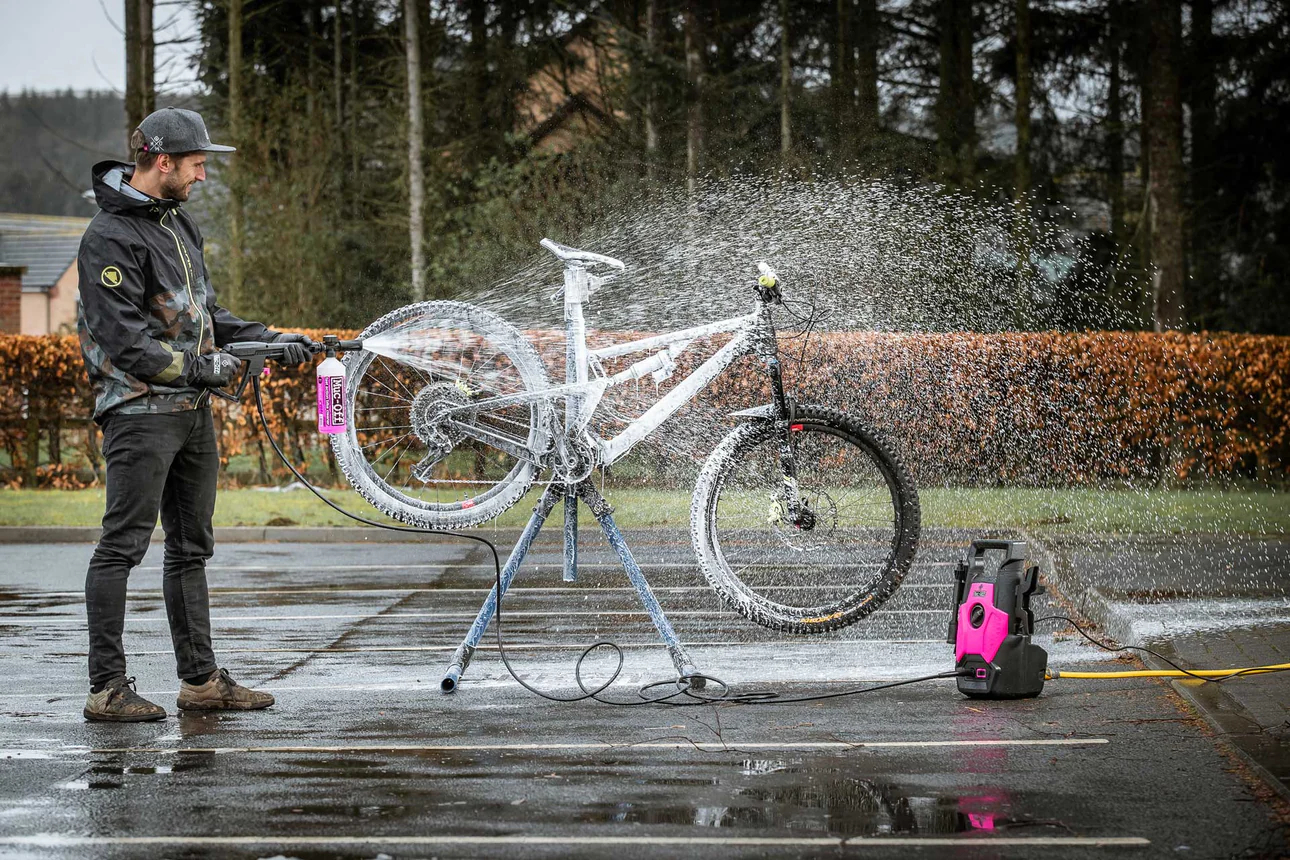
Bicycle paths and pedestrian trails are vital parts of a city’s infrastructure. Whether winding through parks, neighborhoods, or urban areas, these walkways see a lot of foot and wheel traffic—and just like roads and sidewalks, they require routine maintenance to stay safe and attractive. One of the most effective ways to clean and maintain these surfaces? Power washing 💦.
Used properly, pressure washing can restore the look and safety of these public (or private) spaces while extending their lifespan. This article walks you through the best practices for power washing trails and paths—whether you’re a homeowner with a private path, a facility manager, or part of a city maintenance crew.
🧹 Why Clean Bike Paths and Walking Trails?
Over time, outdoor paths collect all kinds of debris, grime, and organic material, including:
- Dirt and dust from nearby landscaping or street runoff
- Algae and moss, which can be dangerously slippery
- Fallen leaves, which stain and trap moisture
- Bird droppings, gum, and litter from public use
- Weeds and grass growing in cracks
These not only make paths unsightly but also create hazards for pedestrians, runners, skaters, and cyclists. Slippery surfaces and uneven grime patches can lead to accidents 🚧.
🛠️ What Surfaces Are Safe to Power Wash?
Most trail and path materials can be safely power washed with the right settings:
| Surface Type | Power Washing Safe? | Notes |
|---|---|---|
| Concrete | ✅ Yes | Use up to 3,000 PSI for deep clean |
| Asphalt | ✅ Yes | Use medium pressure, avoid cracks |
| Pavers or bricks | ✅ Yes | Low pressure, be careful with joints |
| Wood decking | ⚠️ Yes, with caution | Use soft wash and wide nozzle |
| Composite planks | ✅ Yes | Keep PSI below 1,500 |
Avoid pressure washing trails with loose gravel, raw dirt, or compact sand, as these materials can erode or shift easily.
Browse Amazon Here For Top Rated Power Washers And Accessories
🧽 Step-by-Step: How to Power Wash a Bike Path or Walking Trail
1. Clear the Area
Remove loose debris, branches, and litter. Use a leaf blower or broom to get rid of surface-level buildup before using water.
2. Pre-Treat with a Cleaner (Optional)
Use a mild, eco-friendly cleaning solution to break down algae, oil, or stains. This is especially useful for high-traffic areas or shaded paths where mold thrives.
3. Choose the Right Nozzle and Pressure
- Use a 15° or 25° nozzle
- For concrete: 2,500–3,000 PSI
- For asphalt or bricks: 1,500–2,000 PSI
Keep the nozzle 12–18 inches away from the surface and spray at a 45-degree angle for even coverage.
4. Work in Sections
Divide the trail into manageable zones. Clean in overlapping passes to ensure no streaks or missed spots. Start at one end and move in a consistent direction.
5. Rinse and Inspect
After cleaning, rinse with fresh water. Look for cracks, lifted pavers, or drainage issues that were hidden under the grime.
🧴 Dealing with Specific Trail Issues
🌿 Algae and Moss
These grow fast in shaded or humid areas. Use a biodegradable mold/mildew remover and allow it to soak before power washing. Be cautious—these patches are usually slick!
🧼 Gum and Sticky Spills
Use hot water (if your washer allows) and a narrow tip to loosen gum. You can also freeze it with a CO₂ spray or chip it off before washing.
🚲 Oil Stains from Bikes or Equipment
Apply a degreaser and scrub it in before pressure washing. These are common near rest stops or benches.
🌍 Eco-Friendly Considerations
Since trails often run near green spaces, lakes, or parks, environmental safety is critical. Follow these tips:
- Use non-toxic, biodegradable detergents
- Avoid letting runoff enter nearby streams or storm drains
- Consider water recovery systems for large commercial jobs
- Clean on dry days to reduce erosion and pooling
Some cities have regulations around chemical use near public paths—check before you clean.
Browse Amazon Here For Biodegradable Pressure Washing Detergents
👷 DIY or Professional?
- DIY is ideal for short private paths, small parks, or occasional cleanup
- Hire a pro for public trails, large areas, or if you need hot water washing or specialized equipment
Professional services can also schedule routine maintenance plans to keep public paths clean all year.
📅 How Often Should You Clean Trails?
| Use Level | Cleaning Frequency |
|---|---|
| Light use/private | 1–2 times per year |
| Public use (urban) | Every 2–3 months |
| Shaded or mossy | Every 1–2 months |
| After storms/floods | As needed |
More frequent washing reduces long-term buildup and makes each cleaning easier and faster.
✅ Final Thoughts: Clean Paths, Safe Travels
Whether it’s a scenic trail in a park or a paved bike lane through town, power washing plays an important role in safety, cleanliness, and aesthetics. It reduces slip hazards, beautifies the area, and prolongs the life of the surface—all with a relatively simple process 🚴💦.
With a few tools and best practices, your paths can be clear, clean, and ready for whatever traffic rolls through next.
Browse Amazon Here For Top Rated Power Washers And Accessories



